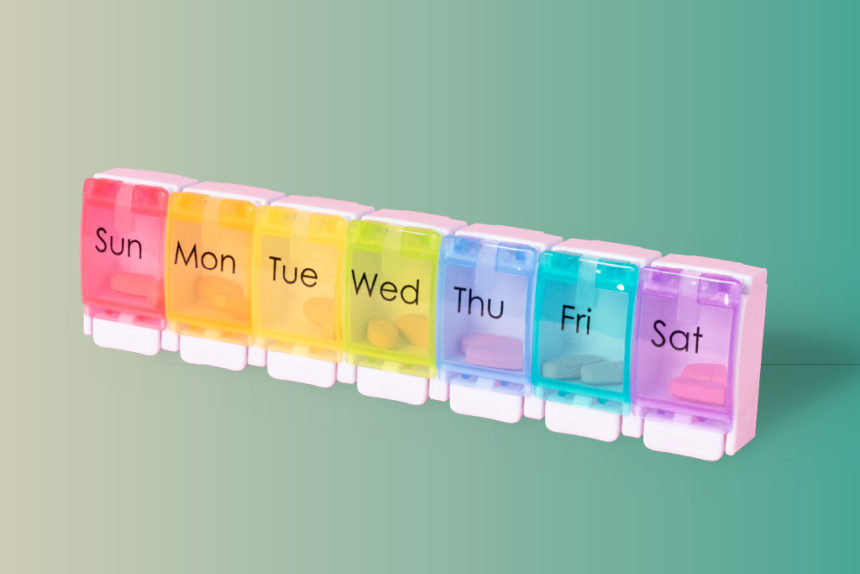Novartis is tossing out the marketing playbook for the launch of cholesterol drug inclisiran, The Wall Street Journal reported last week. The strategy itself may veer into uncharted commercial territory, but the purpose behind the move is a familiar one: To bypass reimbursement hurdles erected by insurers, which have stymied the launch of other pricey new heart meds.
Approved last December in Europe and sold under the brand name Leqvio, inclisiran is due for a decision by the U.S. Food and Drug Administration early next year. If approved, Novartis has an “unconventional” plan up its sleeve: a population health approach.
Novartis plans to approach about 200 hospital administrators, use EMRs to identify which of their patients could benefit most from the treatment, and then offer it to them on a broad scale under the premise that the drug could prevent thousands of heart attacks and strokes. The existing sales force for heart-failure drug Entresto would also carry Leqvio in their bags.
“We don’t know if we’re going to succeed, but what we do know is what’s in place today isn’t working,” Marie-France Tschudin, president of Novartis Pharmaceuticals, told the Journal. “We need to take a different approach.”
Her company’s departure from the traditional sales model reflects the difficulty drugmakers have faced gaining traction in what’s been a punishing market for new cardiovascular meds.

Inclisiran is part of a class of cholesterol-lowering drugs that target a protein known as PCSK9 that’s involved in the buildup of LDL, or so-called “bad” cholesterol. Inclisiran lowers LDL-C by turning off the production of PCSK9. Two other drugs, Amgen’s Repatha and Sanofi/Regeneron’s Praluent, block the protein, inhibiting its action.
Both of those PCSK9 drugs launched in 2015 at a list price of $14,000. But even after Amgen and Sanofi each lowered their prices by some 60%, payers still gave these meds a frosty reception. Insurers restricted access by imposing strict criteria and high co-pays.
Cardiologists have noted that, even with patients whose LDL is resistant to treatment with conventional drugs known as statins, payers largely refused to cover PCSK9 drugs for the first couple of years they were available. The addition of outcomes studies by Amgen and Sanofi in 2017 and 2019, respectively, didn’t help. Despite evidence showing their cardio-protective benefits, many plans continued their exclusionary ways.
The situation hasn’t changed much since then. From 2015 through mid‐2019, few patients started PCSK9 inhibitors, according to a 2021 study led by the University of Pennsylvania. That’s despite the aforementioned price reductions, along with increasing trial evidence of efficacy and guidelines recommending usage of the drugs.
But the older cholesterol drugs run through an insurer’s pharmacy plan. By getting hospitals to adopt and administer Leqvio as a medical benefit, Novartis hopes to avoid a situation where payers are able to use higher co-pays to steer patients away from pricier meds at the drugstore counter. It also plans to price Leqvio at a similar level to the discounted rate for Repatha and Praluent.
Patients would get their Leqvio injection twice a year when they visit their doctor for routine heart checkups. The company hopes compliance would be improved over statin pills (which, although cheap and widely available, must be taken regularly) and over Leqvio’s PCSK9 rivals (which are self-injected every two or four weeks).
The strategy has some potential pitfalls of its own, however. For one, Novartis’ five-year cardiovascular outcomes trial, Orion-4, isn’t set to read out until 2024. Novartis is expecting a 30% relative risk reduction, whereas Repatha and Praluent only manage about 15%. But one prominent cardiologist told the Journal he won’t be willing to utilize inclisiran until then.
And even if Novartis convinces hospital chiefs and heart doctors to embrace Leqvio, payers may not allow providers to procure and manage the drug for patients. They could require a third-party specialty pharmacy to dispense the drug to the HCP (a practice known as “white-bagging”) or have the specialty pharmacy send the drug directly to the patient, who brings it to their provider (“brown-bagging”).
The American Hospital Association has called for a ban on brown-bagging; providers have pushed back on the practice where it has been implemented elsewhere, mostly in the oncology area. Nevertheless, reports suggest payers are using brown-bagging to manage a substantial portion of their medical benefit drug volume. Doing so could effectively clamp down on inclisiran’s use.
Finally, inclisiran’s approval isn’t a slam dunk, either. The drug got the cold shoulder from the FDA a year ago, ostensibly for issues at a manufacturing plant.
There’s a good chance the bright minds at Novartis anticipated many of these challenges. However, analysts have said that inclisiran needs to generate revenue of $3 billion to $4 billion a year in order for the drugmaker’s $9.7 billion purchase of The Medicines Co. to make financial sense.
Perhaps more importantly for patients, if Novartis’ unorthodox marketing tactics don’t enable the new cholesterol med to clear reimbursement hurdles, use of this promising class of lipid‐lowering therapy may continue to be limited.







